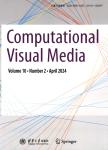No-reference synthetic image quality assessment with convolutional neural network and local image saliency
No-reference synthetic image quality assessment with convolutional neural network and local image saliency作者机构:State Kay Laboratory of Virtual Reality Technology and SystemBeihang UniversityBeijing 100191China School of Computer Science&Information EngineeringZhejiang Gongshang UniversityHangzhou 310018China Department of Computer ScienceUniversity of DurhamUnited Kingdom
出 版 物:《Computational Visual Media》 (计算可视媒体(英文版))
年 卷 期:2019年第5卷第2期
页 面:193-208页
核心收录:
学科分类:12[管理学] 1201[管理学-管理科学与工程(可授管理学、工学学位)] 08[工学] 0835[工学-软件工程] 0811[工学-控制科学与工程] 0812[工学-计算机科学与技术(可授工学、理学学位)]
基 金:sponsored by the National Key R&D Program of China (No. 2017YFB1002702) the National Natural Science Foundation of China (Nos. 61572058, 61472363)
主 题:image quality assessment synthetic image depth-image-based rendering(DIBR) convolutional neural network local image saliency
摘 要:Depth-image-based rendering(DIBR) is widely used in 3 DTV, free-viewpoint video, and interactive 3 D graphics applications. Typically, synthetic images generated by DIBR-based systems incorporate various distortions, particularly geometric distortions induced by object dis-occlusion. Ensuring the quality of synthetic images is critical to maintaining adequate system service. However, traditional 2 D image quality metrics are ineffective for evaluating synthetic images as they are not sensitive to geometric distortion. In this paper, we propose a novel no-reference image quality assessment method for synthetic images based on convolutional neural networks, introducing local image saliency as prediction weights. Due to the lack of existing training data, we construct a new DIBR synthetic image dataset as part of our contribution. Experiments were conducted on both the public benchmark IRCCyN/IVC DIBR image dataset and our own dataset. Results demonstrate that our proposed metric outperforms traditional 2 D image quality metrics and state-of-the-art DIBR-related metrics.



